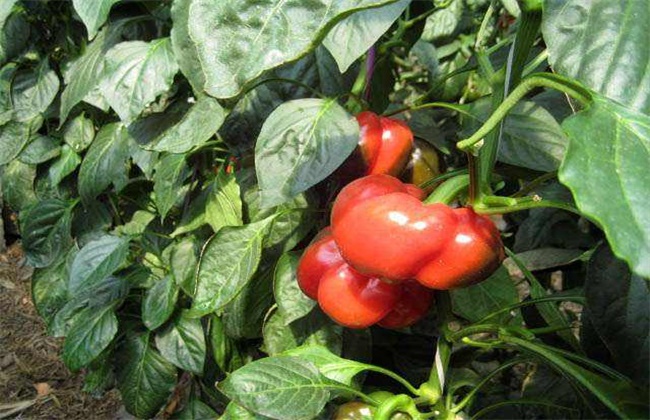High-yield management mode of colored pepper
Colored pepper is one of the sweet peppers, which gets its name because of its bright colors and colorful colors. At present, the price of colored peppers on the market is good. If farmers want to get higher income, they have to find ways to increase their output, so they can naturally increase their income. So how to manage to achieve high yield? Come and have a look with the editor.

1. Dense planting of sparse branches
The main branch of color pepper management is the key, and the number of main branches is determined according to the plant distance. Generally, the plant distance of color pepper is about 54-55 cm, and 4 branches are selected. But if the plant spacing is 47-48 blueberries. Only three main branches are left, although the distance between the plants is small, but the lower part is relatively dense, each fruiting main branch occupies a larger space, and the lighting effect of the plant is much better than that of the four main branches, and the most important thing for plant growth is photosynthesis. If the lighting is good, the photosynthetic efficiency will be higher, so the yield will be higher naturally.
2. Heating up to promote color change
Colored pepper is a temperature-loving crop, which is relatively strict to the temperature during the color conversion period. generally, the greenhouse temperature is kept between 28 and 30 degrees during the day, which is beneficial to its color conversion, but once it is more than 33 degrees or less than 20 degrees, its color conversion will be affected. Therefore, in the color conversion period to pay special attention to temperature regulation, can appropriately improve the shed temperature, in order to promote color conversion. According to the weather change, you can pull the grass curtain late and put it early. When the light is weak in cloudy and rainy days, you can make up the light manually, so that the temperature of the shed will also rise. Pruning and pruning after each fruit harvest can remove too many branches and leaves and increase permeability, which is not only conducive to color conversion, but also reduce unnecessary nutrient consumption.
3. Rational use of fertilizer
As we all know, colored pepper fruit period of greater demand for potash fertilizer, potash fertilizer sowing will cause fruit color black, poor glossiness, thin skin, light weight and other problems. However, potassium fertilizer can not be applied in fertilization, so fertilizer should be applied alternately to ensure the supply and balance of nitrogen, phosphorus and potassium. In addition, colored peppers like to be wet and afraid of waterlogging, so we must have a good grasp of the amount of water when watering and flushing fertilizer, so as to prevent the roots from being waterproof and anoxic, thus affecting the normal growth. Drip irrigation is recommended in general greenhouse cultivation, which can not only ensure that the plant is not short of water, but also will not cause stagnant water.
4. Prevention of diseases and insect pests
The temperature in the shed is high, so diseases and insect pests will enter the peak period, if the prevention and control is not timely, it is very easy to affect the fruit quality and yield of colored pepper, such as common thrips, red spiders, mites, blight, powdery mildew and so on. They will make the leaves yellowing and wrinkling, seriously affecting the photosynthesis of the plant, so the prevention and control of diseases and insect pests must be in advance. For the prevention and control of diseases and insect pests, for example, thrips can be controlled with Ailushi, spinosad, imidacloprid and other agents, while red spiders can use spiromites, thiazide and other agents on the contrary, spraying should be comprehensive to improve the control effect.
The above is the introduction of high-yield management of colored pepper, hope to help you, want to know more related knowledge, please pay attention to us.
Related
- Where is it suitable to grow horseradish in China? it is expected to see the middle altitude horseradish in Alishan.
- How to prevent tomato virus disease reasonably? (Control methods included)
- Many people like to plant towel gourd on the balcony. What are the main points of this method and management?
- What crops can chili peppers be mixed with?
- Fertilization techniques and matters needing attention in Tomato
- What are the grafting techniques for peach seedlings in spring?
- Harm and control methods of root swelling disease of Chinese cabbage
- What are the pests of sweet potatoes? How to prevent and cure it?
- Symptoms, causes and Control methods of navel Rot in Tomato
- The cause of "Cucumber rotten bibcock" in Farmers' planting Cucumber and its Control Plan



